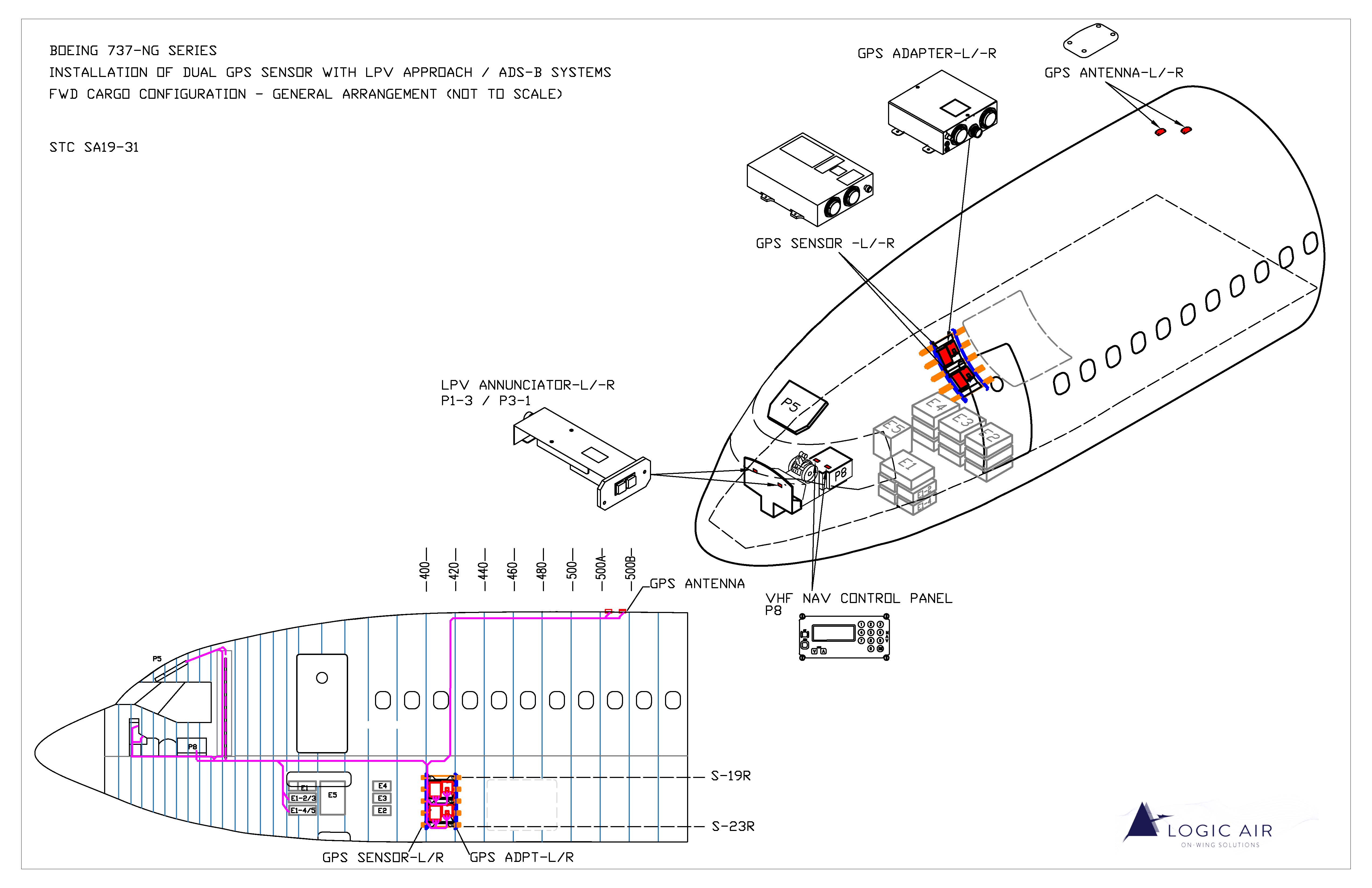

Installation of GNSS with LPV Approach / ADS-B Systems
Overview
Introduction
This STC offers operators an LPV-Approach Solution for Boeing 737-NextGen Series.
Your needs
-
Your benefits
1. Enhanced Safety and Compliance
2. Operational Efficiency
3. Competitive Advantage
4. Cost Management
5. Sustainability Goals
6. Long-Term ROI
7. LPV approaches are much more stable (not dependent on RF signal/interference/weather).
Product Description
Logic Air’s STC integrates renowned CMC’s CMA-5024 GPS/SBAS Landing System Sensor Units and Gables Engineering’s VHF NAV Control Panels with aircraft systems (FMS, EFIS and DFCS) to provide operational and safety benefits of Localizer Performance with Vertical Guidance (LPV) fully coupled precision landing capability.
Your benefits
1. Enhanced Safety and Compliance
2. Operational Efficiency
3. Competitive Advantage
4. Cost Management
5. Sustainability Goals
6. Long-Term ROI
7. LPV approaches are much more stable (not dependent on RF signal/interference/weather).



